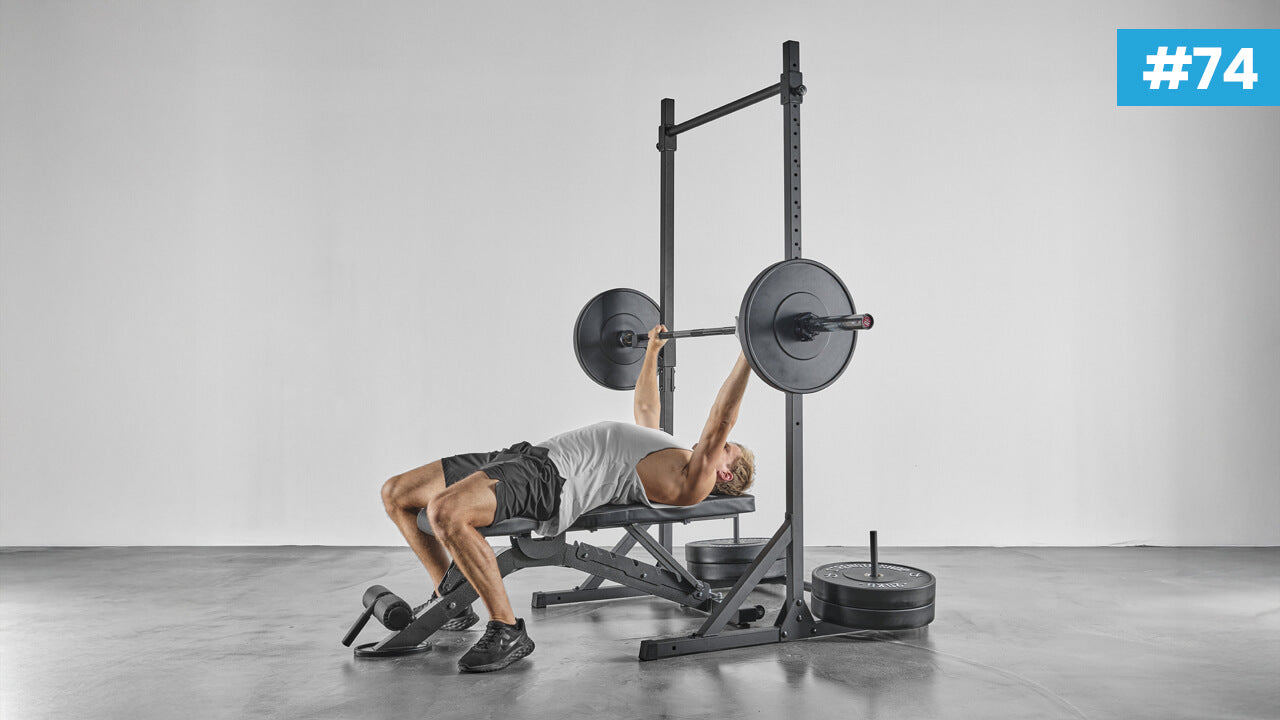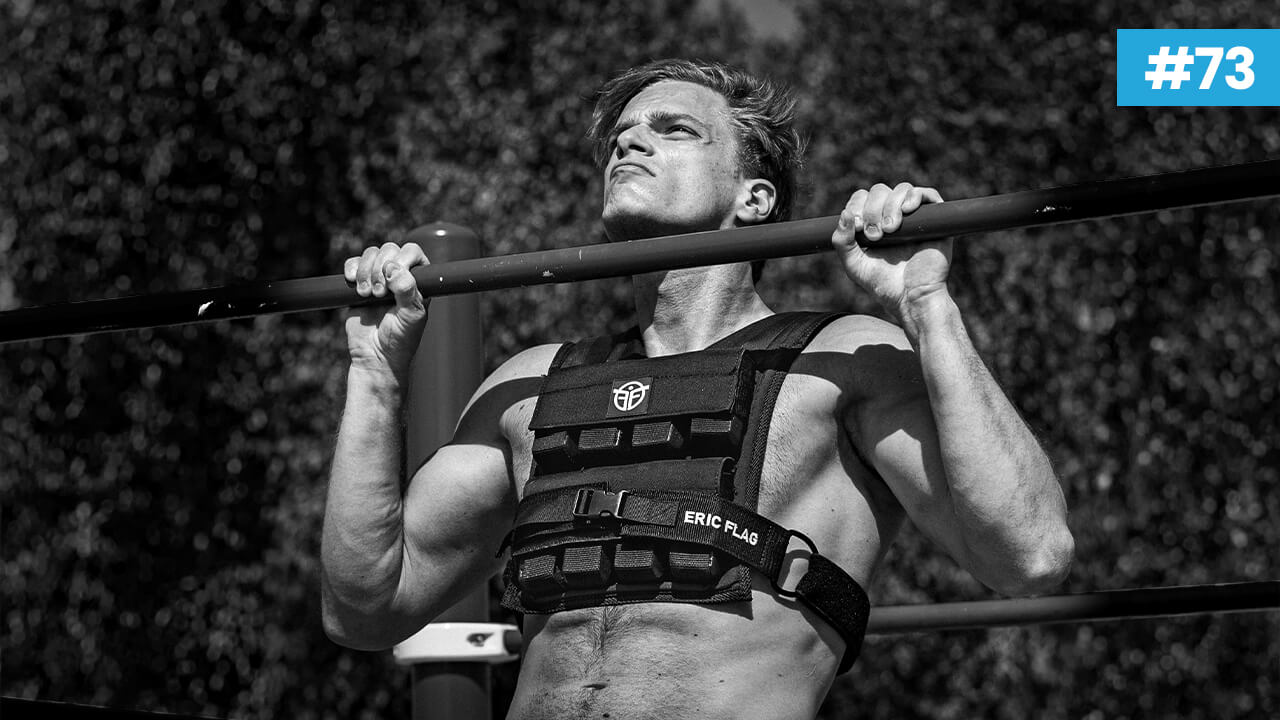Australian Traction: Develop a powerful back!
Looking for a simple, effective exercise to strengthen your back without complex equipment? Look no further, the Australian pull-up is for you!💪
This accessible variant of the traditional pull-up is performed in a horizontal position, just below a high bar. It's suitable for all fitness levels.
Discover the techniques, benefits and variations of the Australian pull up in this article. You'll learn how this exercise can improve your posture, strengthen your muscles and optimize your performance in classic pull-ups 🔥
What is the Australian Pull up ?
The Australian pull up, also known as the horizontal pull-up or reverse rowing, targets the back muscles. You stand under a fixed bar, in a horizontal position, and pull your body upwards.
The exercise mainly uses the back muscles and arms. Thanks to its flexibility in terms of holds and variations, it's accessible to beginners and advanced alike.
Differences from Traditional Pull up
Unlike conventional pull-ups, where you pull yourself up vertically, the Australian pull-up puts more emphasis on the back and trapezius muscles. This makes the exercise more accessible, as it requires less initial force. It's an excellent intermediate step for those wishing to master traditional pull-ups.
Muscles involved in Australian Pull up
This is a versatile exercise that calls on several muscle groups:
- Dorsal muscles: essential for the pulling movement.
- Biceps: involved in elbow flexion.
- Forearms: guarantee a good grip.
- Trapezius: contributes to shoulder and neck stability.
Benefits of Australian Pull up
Here are the many benefits of Australian pull ups:
- Improved posture: strengthens the back's stabilizing muscles.
- Muscle strengthening: Develops arm and back strength.
- Accessibility: Suitable for all levels, from beginners to advanced.
- Injury prevention: less stress on shoulders and lower back.
- Progression to Classic Pull-Ups: Ideal for perfecting your skills.
Basic Techniques and Tips for Getting Started

Australian pull-up in supination grip
Start position
To succeed in the Australian pull, make sure you adopt a good starting position:
- Lie under the bar, feet on the ground (or raised), legs bent.
- Hold the bar in pronation (palms outwards) or supination (palms towards you), with your hands shoulder-width apart.
- Keep your body aligned: engage your abs, glutes and thighs without arching your back.
Movement execution
- Inhale and activate your back muscles by bringing your shoulder blades together.
- Exhale, bend your elbows and pull yourself towards the bar until your chest touches it.
- Hold the high position briefly, then lower slowly.
Breathing and Concentration
- Breathe regularly: inhale on the way down, exhale on the way up.
- Visualize the muscles being worked and stay focused to avoid distractions.
Safety: Avoiding Mistakes and Injuries
For safe Australian pull up:
- Keep your body straight: don't arch your back to avoid overloading the lumbar vertebrae.
- Control movement: rapid descent or loss of muscle tension increases the risk of injury.
- Adapt the exercise to your level: too many or too few repetitions can slow down your progress.
- Vary your workouts: changing your grip, number of repetitions and intensity avoids stagnation and fatigue.
Maximizing Benefits and Varying Workouts
Adjust exercise parameters to progress:
- Number of repetitions and sets: increase them gradually.
- Speed of execution: speed up the ascent or slow down the descent to vary the intensity.
- Angle of inclination: change the angle between your body and the ground to increase the difficulty.
- Additional load: use a weighted vest or backpack to add resistance.
Variants of Australian Pull up

Diversify your workouts with these variations:
- Supination grip: palms towards you, to target the biceps.
- Neutral grip: palms face each other, reducing stress on wrists.
- Unilateral: use one hand to increase difficulty.
- On one leg: lift one leg for an extra challenge.
- Gymnastics rings For varying amplitude and coordination.
Complementary Exercises for a Strong Back
Complete the Australian pull with these exercises:
- Vertical pull: seated, pull a bar towards your chest.
- Horizontal pull: seated, pull a bar towards your stomach.
- Rowing: standing or bent over, pull a dumbbell towards your chest.
- Deadlift: stand and lift a barbell off the ground.
Incorporate these exercises to strengthen your back and improve your posture.
Training Frequency and Rest: Balanced Routine
For optimum results:
- Train 2 to 3 times a week, with 48 hours' rest between sessions.
- Integrate Australian pull up into a complete training program.
- Listen to your body: adjust your training if you feel tired or sore.
- Eat a balanced diet and drink enough: make sure you eat a diet rich in proteins and complex carbohydrates.
Conclusion
The Australian pull up is a powerful bodybuilding and street workout for your back and arms. It improves your posture and stability and is excellent preparation for classic pull-ups.
To get the most out of this exercise, make sure you follow the right technique, breathe correctly and stay focused. Vary your workouts and progress at your own pace to avoid stagnation.
Practice this exercise regularly in your home gym, without excess, and adopt a balanced diet to optimize your results.
I hope you enjoyed this article!
Feel free to comment if you do 😃
Eric Flag






Leave a comment
This site is protected by hCaptcha, and hCaptcha's Privacy Policy and Terms of Service apply.